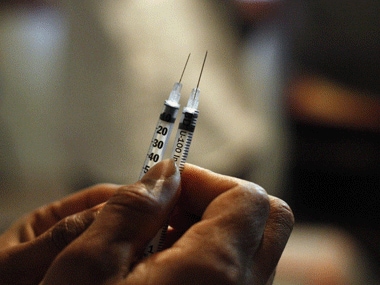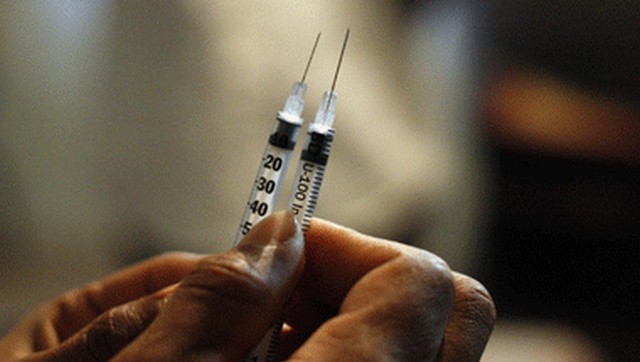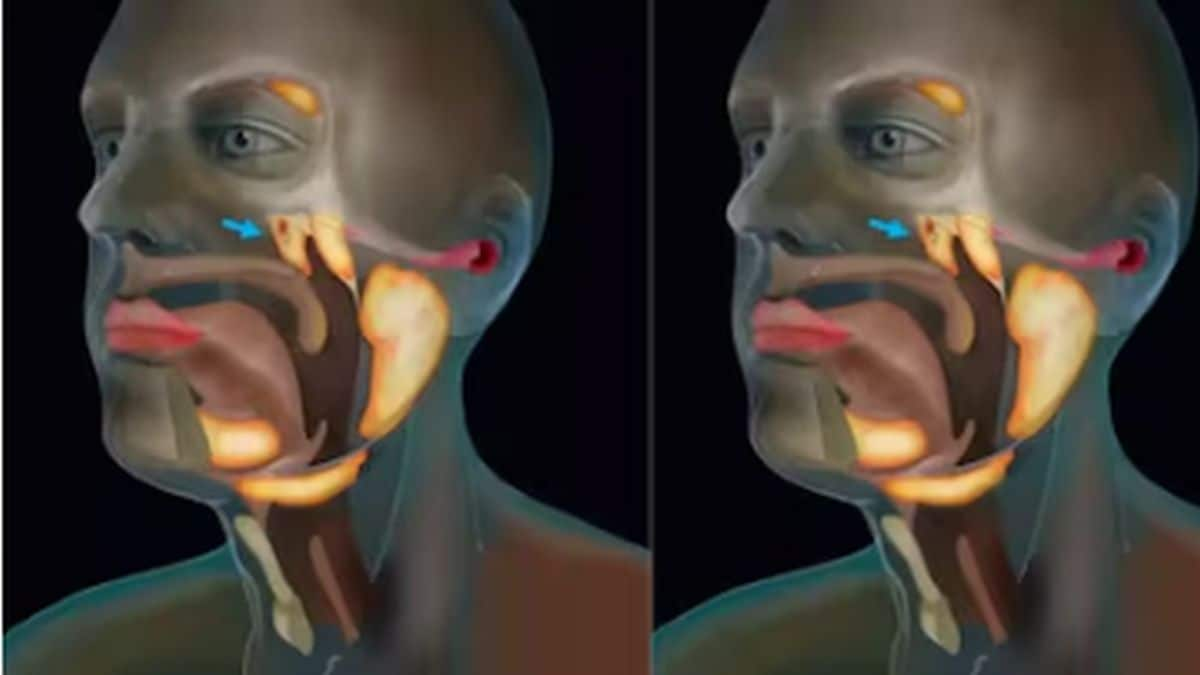After Moderna Inc revealed the preliminary results of their COVID-19 vaccine candidate this week, the Chinese vaccine company Cansino Biologics Inc has followed with publishing a paper in The Lancet on May 22. The paper revealed the results of phase 1 clinical trials of the adenovirus vector-based vaccine they are developing in collaboration with the Beijing Institute of Biotechnology. [caption id=“attachment_795429” align=“alignleft” width=“380”]  Representational image. Reuters.[/caption] As per media reports, the vaccine has shown promising results. The Lancet study also suggested that it is tolerable and generates an immune response against the virus. However, the researchers mentioned in the study that they don’t know for sure how much the vaccine would be protective against COVID-19 since they don’t know much about the effectiveness of antibodies and T-cell response against the disease.
The study
The Ad5 vector is one of the most common adenovirus vectors used for various biomedical studies. The Cansino Ad5 is a non-replicating vector that expresses the full-length spike protein of SARS-CoV-2, the causative agent of COVID-19. The vaccine had entered phase 1 trials in March along with the Moderna’s mRNA vaccine candidate. For the study, researchers injected their Ad5 vectored vaccine in a group of 108 individuals in an age group between 18 and 60. The volunteers were divided into three groups of 36 and the vaccine was given intramuscularly with a single shot in increasing doses to the three groups - low dose (5 x 1010 viral particles per 0.5 mL vial), middle dose (1 x 1011viral particles per 1 mL vial) and high dose (1 x 1011 viral particles per 1.5 mL vial). On day 14, all the participants showed the presence of antibodies which peaked at day 28 and T-cell response peaked at day 14 after the vaccination. The antibody titer (the measure used for antibody levels) for both binding and neutralising antibodies was directly proportional to the dose of the vaccine. Mean titer for neutralising antibody in the high-dose group was noted to be 34.0, while it stood at 16.2 in the middle and 14.5 in the low-dose group.
Adverse reactions
As per the study, about 81% of all the participants (83% in the low-dose group, 83% in the middle-dose group and 75% in the high-dose group) showed at least one adverse reaction to the vaccine within the first seven days. The most common reaction was pain at the injection site, along with redness, swelling, itching and induration. Some systemic adverse reactions noted in all patients were fever, muscle pain and headache. Nine people in the low-dose group, two in the middle-dose and five in the high-dose group had a grade 3 high fever with an ancillary temperature (checked in armpits) above 38.5°C. As per the US FDA, a grade 3 incident is when the symptom is severe or clinically significant and may need hospitalisation but is not immediately life-threatening. One person in the high dose group experienced severe fatigue, breathing difficulties and muscle pain. These reactions occurred within a day after vaccination and did not persist for more than two days. The study suggested that a lot of people had high preexisting immunity to the Ad5 vector which may have kept a check on fever after the vaccination. On day seven, nine people had mild to moderate increase in bilirubin levels, 10 had alanine aminotransferase levels (ALA), and about 4 had fasting hyperglycemia (high blood sugar levels). Though these increases were said to be clinically insignificant, increase in bilirubin and ALA levels usually occur due to liver dysfunction or damage.
Other points to consider
The following limitations were suggested in the study:
- Previous studies with MERS (Middle Eastern Respiratory Syndrome) and SARS (Severe Acute Respiratory Syndrome) have shown that antibodies quickly declined in patients after recovery, even though T-cells played an important role in maintaining immunity. Similar antibody decline has been seen in COVID-19 patients too. While antibodies neutralise the virus outside the cells, T-cell response plays a major role in destroying virus-infected cells.
- A lot of people had preexisting neutralising antibodies against Ad5 which may have compromised the development of antibodies against COVID-19 and people in the age group of 45-60 showed lesser antibodies as compared to younger subjects.
- The study was non-randomised and did not have any controls.
- The follow-up duration was really short.
- Only 16% of people in the study were above 50 years and none above 60.
Phase 2 trials of the vaccine are currently ongoing in China. The researchers are planning to add more people above the age of 60 in those trials and only the low and middle doses of the vaccine will be given in those trials. For more information, read our article on Coronavirus vaccine candidates. Health articles in Firstpost are written by myUpchar.com, India’s first and biggest resource for verified medical information. At myUpchar, researchers and journalists work with doctors to bring you information on all things health.


)

)
)
)
)
)
)
)
)



